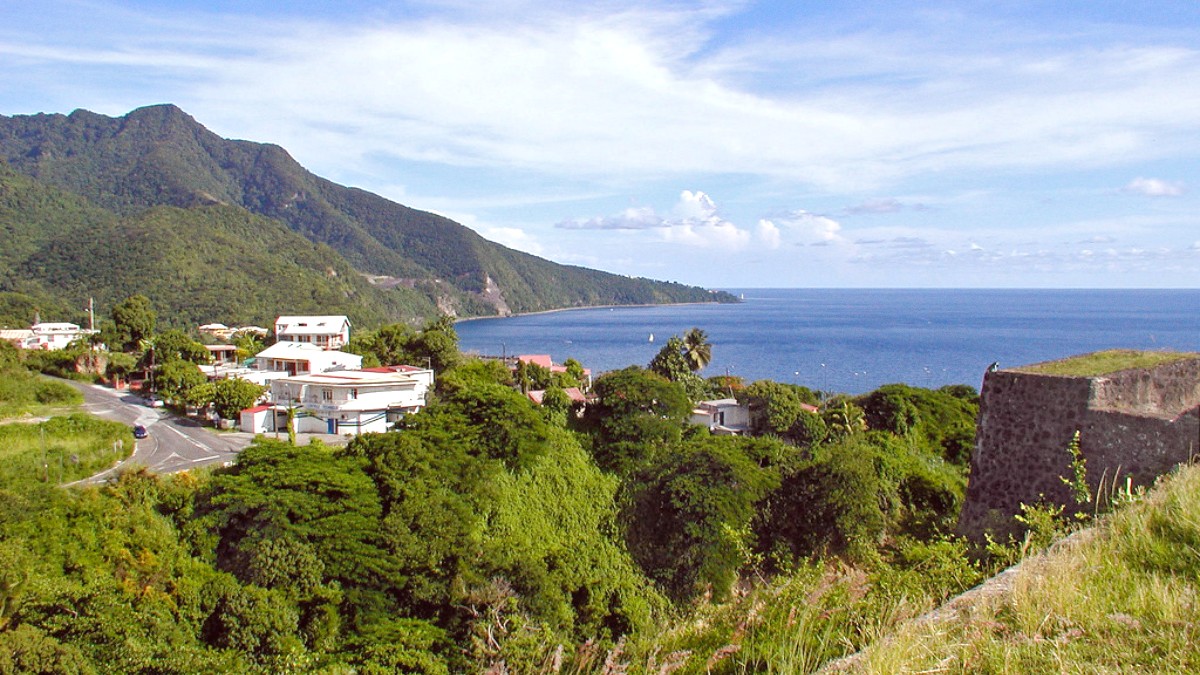
Guadeloupe
Pointe-à-Pitre, located on Grande-Terre, comprises Guadeloupe’s dynamic urban core. It is a location where history resonates through colonial architecture, where local markets overflow with sensory delights, and where cultural institutions tell stories of resilience and heritage. The city presents visitors a compelling introduction to the island’s unique identity. It acts as a point of arrival, a hub of activity, and a gateway to the broader wonders of Guadeloupe.
Arrive in Pointe-à-Pitre and discover a blend of old-world charm and modern Caribbean energy. The streets hum with daily life, local vendors invite you to sample their wares, and the sea breeze carries adventure. An experience engaging all senses, from the aroma of freshly baked pastries to the rhythm of local music, awaits. This city forms a starting point for any Guadeloupean exploration, delivering a genuine taste of the island's character.
Plan to spend at least one full day in Pointe-à-Pitre to absorb its atmosphere, explore its markets, and visit its significant cultural sites. The city presents a different flavor of Guadeloupe compared to its beaches or rainforests.
Guadeloupe has a place in the Lesser Antilles, an arc of islands in the Caribbean Sea. It lies southeast of Puerto Rico and north of Dominica. The archipelago itself comprises several islands, but two large islands, Grande-Terre to the east and Basse-Terre to the west, connect by a narrow strait, the Rivière Salée, crafting a shape often compared to a butterfly. These two main landmasses present distinct geographical characteristics.
Grande-Terre, the eastern wing of the "butterfly," is a generally flatter landscape. It comprises limestone formations, with a drier climate, allowing for extensive sugar cane cultivation. This part of the island contains many of Guadeloupe's famed white-sand beaches, resort areas, and larger urban centers. Pointe-à-Pitre sits on the southwestern coast of Grande-Terre, positioned strategically at the narrowest point where Grande-Terre and Basse-Terre meet. This location provides easy access to both islands.
The western wing presents a dramatic contrast with volcanic peaks, rainforests, and waterfalls.
Its location on a natural harbor historically formed a prime trading port.
The city's position grants easy access to Grande-Terre's bustle and Basse-Terre's natural beauty.
A large bay and natural reserve between the two main islands, north of Pointe-à-Pitre.
Islands like Les Saintes and Marie-Galante are ferry accessible for more exploration.
The surrounding waters of the Caribbean Sea and the Atlantic Ocean shape Guadeloupe's climate and marine life. The Grand Cul-de-Sac Marin, a large bay and natural reserve, lies between the two main islands, just north of Pointe-à-Pitre. This protected area, with its extensive mangrove forests and diverse marine ecosystem, adds natural beauty and ecological importance to the region.
Pointe-à-Pitre's specific location, nestled on a natural harbor, historically made it a prime trading port. This geographical advantage means travelers based in Pointe-à-Pitre may readily reach diverse experiences, from city explorations and beach relaxation to rainforest hikes and volcanic adventures.
Pointe-à-Pitre serves as a logical starting point for branching out to explore the island's varied landscapes, from the flat, beach-lined eastern coast to the mountainous, rainforest-covered western side. The city’s position makes it a natural hub for all island adventures.
[Image of a map showing Guadeloupe's butterfly shape with Pointe-à-Pitre marked]
Pointe-à-Pitre is a long and complex history, deeply intertwined with Guadeloupe's colonial past and its development as a Caribbean trading hub. Founded in the late 18th century, the city grew around its natural harbor, a main port for trade, especially in sugar and slaves. This economic engine shaped its early development, attracting a diverse population and establishing its urban character.
Throughout the centuries, Pointe-à-Pitre saw numerous conflicts and changes in sovereignty. French, British, and Swedish forces contested control of Guadeloupe, and the city often suffered from these battles. Fire and natural disasters also repeatedly ravaged the city, leading to a cycle of destruction and rebuilding. These challenges, however, contributed to the resilience and unique architectural style visible in its older districts today. The "Iron Cathedral," Cathédrale Saint-Pierre et Saint-Paul, with its metal structure, is a testament to the city's innovative rebuilding efforts after past devastation.
Repeated destruction by fire and natural disasters led to cycles of rebuilding, demonstrating the city's resilience and unique architectural style.
The city experienced control contests among French, British, and Swedish forces over centuries.
Founded in the late 18th century, the city grew as a main port for sugar and slave trade.
The history of slavery deeply impacts Pointe-à-Pitre and Guadeloupe. The port served as a major entry point for enslaved Africans to work on sugar plantations. This painful legacy shaped the island's demographics, culture, and social structures. The Mémorial ACTe, located in Pointe-à-Pitre, directly confronts this difficult past, a powerful and reflective space dedicated to the memory and history of the transatlantic slave trade. It marks a profound reminder of the human cost of the island's historical economy.
The city has the Mémorial ACTe, other museums, and a cultural center for performances.
Markets like Marché Saint-Antoine and Marché de la Darse burst with local goods and flavors.
Colonial buildings and landmarks like Cathédrale Saint-Pierre et Saint-Paul are present.
Plan to use Comfortable walking shoes when exploring Pointe-à-Pitre. The city center is best discovered on foot.
Expect a lively atmosphere, especially during market hours. The city’s energy contrasts with the more relaxed pace elsewhere on the island.
Pointe-à-Pitre forms a cultural anchor for Guadeloupe, delivering depth and perspective to any visit. It is a place to connect with the island's past, engage with its present, and get ready for adventures beyond its bustling streets.